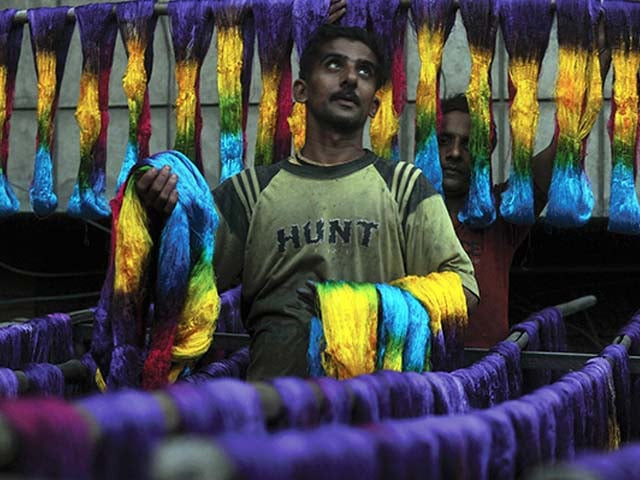While the textile sector continues to be an export cash cow for Pakistan, the national share in the global textile trade has experienced an incessant contraction. This paradox is evidenced by the fact that the textile sector has limped behind Bangladesh, India, China, and Vietnam in the wake of various bottlenecks, including an overvalued rupee and exorbitant power tariffs.
The former was addressed when the currency could not sustain its artificially uplifted value. However, the cost of electricity remained elevated. For instance, the local textile players were coerced to consume electricity at 11.5 cents per kWh at the start of the year when the same was available at 7.5 cents per kWh in China, 9 cents per kWh in Bangladesh, and 8 cents per kWh in both Vietnam and India. This made it onerous for them to compete for market share against these counterparts.
The odds were swayed so badly in favour of others that the government had to withdraw surcharges in February. This culminated in the provision of electricity at 7.5 cents per kWh for the sector until it was increased to 9 cents per kWh in September. The tariff is again costlier than what the exporters in other countries pay. It amplifies the industry’s woes that had already been limited to operating in off-peak hours because of further high peak hour’s rate.
Amidst this storm, the incumbents promulgated a relief package for all industries. The government calls it an economic masterstroke that will foster productivity and employment. In that case, the package must effectively reduce the energy burden on manufacturing units of the country’s prime export, textile. Let us find out if this assumption is valid.
At this time, Pakistan is savouring a heap of international textile orders due to an economic head-start. Besides, many textile orders from America are being rerouted to Pakistan due to the excessive duties levied on imports from China. Thus, the exporters will look to fetch new orders and operate double shifts. The energy cost for the shift during off-peak hours remains the same. However, the quashing of additional electricity tariffs across the board during peak hours means that the second shift will prove propitious.
Therefore, in this shift, the cost charged per kWh will incorporate 50% and 25% concessions for small and medium enterprises (SMEs) and large-scale manufacturing (LSM) respectively. The effective tariff will now be 6.75 cents per kWh for SMEs and 7.875 cents per kWh for LSM (assuming both the shifts have identical working hours). According to a report titled “Pakistan in the Apparel Global Value Chain”, published by the World Bank and Duke Value Chains Centre, SMEs only contribute roughly 10% to Pakistan’s textile industry. When we take this composition into account, the effective average tariff for the sector becomes 7.76 cents or Rs. 12.4 per kWh ($1 = Rs. 160).
Hence, the package invigorates the industry by reducing the tariff borne by exporters by 13.7%. It provides a level-playing field in the post-lockdown global trade dynamics where tariffs in the region range from 7 to 9 cents per kWh. Besides, it offers a greater relief to SMEs, which is a rarity in Pakistan since only the industrial giants have previously been able to extract benefits from rebates and subsidies.
The textile sector grew by 8.42% in October compared to September 2020 and by 6.2% on a year-on-year basis. Now is the time to gain more ground so that the exports back at the pre-Covid level witness a further upturn. The resumption of a 50% tariff discount on incremental power consumption extended to SMEs is subject to review in June next year, but the SMEs will still be able to avail 25% markdown for a further two years, even if the government decides against a renewal. Likewise, the government seems reluctant to augment the power tariff any time soon in the wake of an exacerbated political atmosphere and inflated food prices. How long it can resist the direction of the International Monetary Fund (IMF) in this regard is yet to be seen.
However, the favourable returns of the package will be limited until the government reduces customs and regulatory duties on imported cotton yarn and machinery. The duties on imported yarn have caused a profound shortage in raw material of late. Pakistan has become reliant on imported cotton yarn primarily due to a reduction in cotton production locally. On the flip side, duties on machinery curtail the industry from ameliorating productivity levels. The industries and finance ministries must mull upon demanded automation, relaxation of duties, simplification of tax laws, and amendment of rules to further facilitate the sector.



COMMENTS
Comments are moderated and generally will be posted if they are on-topic and not abusive.
For more information, please see our Comments FAQ